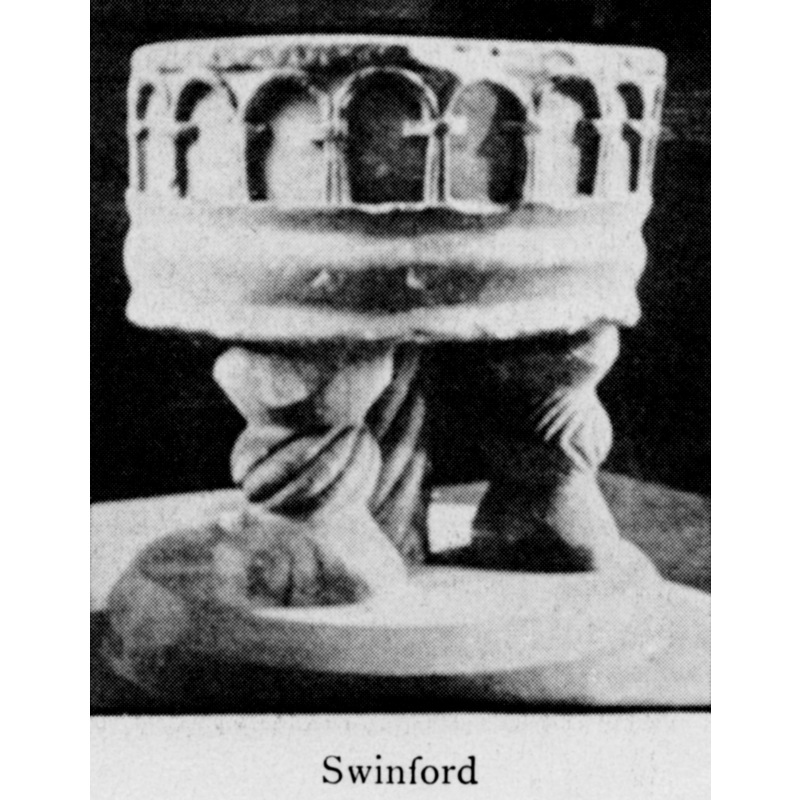Swinford

Image copyright © [in the public domain]
PD
Results: 4 records
BBU01: design element - architectural - arcade - blind - round arches
LB01: design element - patterns - groove - diagonal
LB02: design element - patterns - torsade
INFORMATION
FontID: 05636SWI
Object Type: Baptismal Font1
Church/Chapel: Parish Church of All Saints
Church Patron Saints: All Saints
Country Name: England
Location: Leicestershire, East Midlands
Directions to Site: Located 10-12 km ENE of Rugby, 25-30 km S of Leicester (exit the M1 at exit #19 but follow the B5414, not the A14)
Font Location in Church: Inside the church
Century and Period: 12th - 13th century, Norman
Font Notes:
Click to view
Carte (1792) notes that, against his expectations in a place that had belonged to the Knights Hospitallers, he did not observe any "extraordinary ornaments, either of device or sculpture" on the baptismal font there. The font is noted and illustrated in Upcott (1818). Illustrated in Bond (1908) as a baptismal font with a columnar base; the number of outer columns, three, is rather an exception for this type of font. Noted in Pevsner (1984): "Font. Circular, Norman, with short blank arcading. Some supports with their fat fluted baluster shapes may be of the C17." The baptismal font appears to be 12th or 13th century, the earlier date based on the basin, the later in consideration of the odd base. The basin is cylindrical ; the upper half is ornamented with a blind arcade of round arches; the lower half is plain although an ondulation around the side appears like an attempt at a moulding [cf. Pevsner remark/suggestion above]. The oddity of the base consists of the number of legs, their arrangement and their shape; there is a central shaft with twisted moulding motif that has neither capital nor base; the three outer columns show an attempt at the three columnar elements (capital, pedestal and base) but, with the columns being so thick and short and with an attempt at retaining the twisted moulding motif on these as well, the result is less than successful giving the font a rather grotesque shape. The whole has been raised on a circular pedestal.
MEDIUM AND MEASUREMENTS
Material: stone
Number of Pieces: five?
Font Shape: cylindrical (mounted)
Basin Interior Shape: round
Basin Exterior Shape: round
REFERENCES
Bond, Francis, Fonts and Font Covers, London: Waterstone, 1985 c1908
Carte, Samuel, "Three letters from Mr. Samuel Carte to Dr. Ducarel, and one to Sir Thomas Cave, concerning fonts [or, Mr. Carte's Observations on ancient fonts]", X, Archaeologia, 1792, pp. 208-225; p. 224
Pevsner, Nikolaus, Leicestershire and Rutland, Harmondsworth: Penguin Books, 1984
Upcott, William, A bibliographical account of the principal works relating to English topography, London: Printed by Richard and Arthur Taylor, 1818